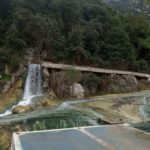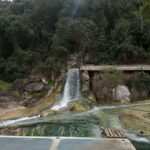Welcome to the hot gates of Thermopylae today! Embark on a fascinating journey as we explore the legendary site of one of the most famous battles in ancient history. Although the landscape has changed over time, this historic location still holds its allure and beckons visitors to discover the remnants of a bygone era.
The hot gates of Thermopylae, once a narrow coastal passage, have transformed due to the advancing shoreline and continuous deposition of sediment. Buried under layers of soil, the battlefield where 7,000 Greeks valiantly fought against 100,000-150,000 Persians may not be prominent anymore, but its impact on history remains significant.
As you wander through this historic site, you’ll encounter the Memorial of Leonidas and the 300 Spartans, a symbolic tribute to the bravery and sacrifice of the Greek warriors. Towering over the landscape is a magnificent bronze statue of King Leonidas, commanding respect and admiration.
To gain a deeper understanding of the Battle of Thermopylae, take a moment to visit the small museum on-site. Here, you can delve into the historical context, unraveling the strategic decisions and the ultimate outcome of this monumental clash between East and West.
Prepare to be immersed in the unique atmosphere of Thermopylae, where history blends with myth. The hot sulfur springs in the area, believed to be the entrance to the underworld of Hades in Greek mythology, lend an enchanting aura to the site.
Key Takeaways:
- Explore the hot gates of Thermopylae today and soak in the ancient history.
- Witness the Memorial of Leonidas and the 300 Spartans, paying tribute to the brave Greek warriors.
- Visit the small museum on-site for a deeper understanding of the Battle of Thermopylae.
- Discover the unique atmosphere of the site, with its mythical connections to Greek mythology.
- Experience a journey that will leave you with a lasting appreciation for the heroic stand of the Greeks.
The Battle of Thermopylae: Historical Facts and Details
The Battle of Thermopylae, fought in 480 BC, is a significant event in ancient history. It pitted a Greek force, including 300 Spartans, against the Persian army led by King Xerxes I. The Greek force, consisting of around 7,000 soldiers from various city-states, strategically chose the narrow coastal pass of Thermopylae to confront the much larger Persian army of 100,000-150,000 soldiers.
The battle lasted for seven days, with three days of intense fighting. Despite their valiant efforts, the Greek defenders were ultimately defeated by the Persians. This defeat had severe consequences, as it allowed the Persians to march southward and sack the city of Athens. However, the Battle of Thermopylae became an enduring symbol of Greek resistance against overwhelming odds, exemplified by the bravery and sacrifice of the 300 Spartans.
“Go, stranger, and to Lacedaemon tell
That here, obeying her behests, we fell.”
The Battle of Thermopylae holds a significant place in history, showcasing the determined stand of a small Greek force against a mighty empire. It has inspired countless retellings in literature and film, immortalizing the heroism of the Greek warriors who fought in the hot gates. Today, visitors to Thermopylae can explore the historic site and pay their respects at the Memorial of Leonidas and the 300 Spartans, a poignant reminder of the courageous struggle that took place in this very location.
Table: Comparison of Forces at the Battle of Thermopylae
| Greek Forces | Persian Forces |
|---|---|
| Assortment of Spartans, Lakedemonians, Thebans, and Thespians | Army led by King Xerxes I |
| Around 7,000 soldiers | 100,000-150,000 soldiers |
| Strategically chose the narrow coastal pass of Thermopylae | Numerical advantage over the Greeks |
Visiting Thermopylae provides an opportunity to immerse oneself in the historical narrative of the Battle of Thermopylae, gaining insights into the tactics, sacrifices, and historical significance of this extraordinary battle.
Thermopylae Today: Visiting the Historic Site
Thermopylae, despite its dramatically changed landscape, still offers an opportunity to step back in time and explore the legendary battlefield where the Battle of Thermopylae unfolded. As a battlefield site rather than a large archaeological site, exploring the site won’t take long, usually no more than 30 minutes. This makes it a perfect stop for history enthusiasts and casual visitors alike.
The main attraction at Thermopylae is the Memorial of Leonidas and the 300 Spartans. This impressive monument features a monumental stone wall and a bronze statue of King Leonidas, commemorating the brave stand of the Greek warriors against the Persian army. Additionally, visitors can admire two marble statues representing the river Eurotas and Mount Taygetos, adding to the unique atmosphere of this historic site.
In addition to the outdoor attractions, the site of Thermopylae also houses a small museum. Here, visitors can delve deeper into the historical significance of the Battle of Thermopylae and gain a better understanding of the context surrounding this ancient conflict. The museum provides valuable insights and displays artifacts related to the battle, enriching the visitor’s experience.
Discovering the Mythology of Thermopylae
Thermopylae’s historical significance goes beyond the battle itself. The name “the Hot Gates” originates from the hot sulfur springs in the area, believed to be the entrance to the underworld of Hades in Greek mythology. This mythical association adds an intriguing layer to the site’s allure, inviting visitors to connect with ancient beliefs and legends.
Visiting Thermopylae today allows you to pay your respects at the memorial, learn about the battle’s historical context, and immerse yourself in the unique atmosphere of this significant historic site. Whether you are a history enthusiast or simply curious about the ancient world, Thermopylae offers a memorable journey through time.
| Attraction | Highlights |
|---|---|
| Memorial of Leonidas and the 300 Spartans | – Monumental stone wall – Bronze statue of King Leonidas – Representation of river Eurotas and Mount Taygetos |
| Museum | – Historical context of the Battle of Thermopylae – Displays of artifacts related to the battle |
Conclusion
In summary, a visit to Thermopylae today allows you to immerse yourself in the legendary battlefield where the Battle of Thermopylae unfolded. Although the landscape has undergone significant changes over the centuries, the site remains a testament to the remarkable courage and sacrifice exhibited by the Greek warriors who stood against the Persian army. The Memorial of Leonidas and the 300 Spartans stands tall, serving as a poignant reminder of their heroic last stand.
Whether you are a history enthusiast or simply curious about the ancient world, Thermopylae offers a unique opportunity to delve into the past. As you explore the site, you can gain valuable insights into the strategies employed by the Greeks and the historical significance of this momentous battle. The small museum on-site further enhances your understanding of the events that unfolded at Thermopylae.
It is important to note that although the landscape has changed, the significance of Thermopylae remains intact. The hot gates, once a narrow coastal passage, may have vanished, but the spirit of the battle lingers, inviting visitors to reflect on the bravery and determination of those who fought there. Visiting Thermopylae today is an enriching experience that offers a glimpse into a pivotal chapter of ancient history.
FAQ
Can visitors still explore the site of the Battle of Thermopylae?
Yes, visitors can still visit the site, although the landscape has significantly changed over time.
What is the significance of the Battle of Thermopylae?
The Battle of Thermopylae is a famous battle in ancient history and holds historical significance as it paved the way for the subsequent looting and burning of Athens by the Persians.
How long does it take to explore the site?
As a battlefield site rather than a large archaeological site, exploring the site usually takes no more than 30 minutes.
What are the main attractions at the site?
The main attractions at the site include the Memorial of Leonidas and the 300 Spartans, a large bronze statue of King Leonidas, and a small museum providing historical context to the battle.
Why is it called “the Hot Gates”?
The name “the Hot Gates” comes from the presence of hot sulfur springs in the area, which were believed to be the entrance to the underworld of Hades in Greek mythology.
What can visitors learn from a visit to Thermopylae?
Visitors to Thermopylae can learn about the battle, pay their respects at the memorial, and gain insights into the bravery and sacrifice of the Greek warriors who fought against the Persian army.
Source Links
- https://www.thetravel.com/thermopylae-300-site-sparta-movie-location/
- https://www.tripadvisor.com/Attraction_Review-g189412-d1526336-Reviews-Battlefield_of_Thermopylae-Thermopylae_Phthiotis_Region_Central_Greece.html
- https://thetravelporter.com/athens/hiking-thermopylae-path
Author Profile
-
Welcome to e-thermopyles.gr, your gateway to the fascinating world of Thermopylae and the legendary Spartans. My name is George Margaritis, and I’m the proud owner and writer behind this website.
A Passion for History and the Spartan Legacy
I consider myself fortunate to call the historic site of Thermopylae my home. From a young age, I was captivated by history, and in particular, the incredible tale of the Battle of Leonidas in Thermopylae. The valiant stand of King Leonidas and his 300 Spartans against overwhelming odds has left an indelible mark on the annals of history.
As I delved deeper into this captivating story, my fascination only grew. The bravery, strategy, and sacrifice of those Spartan warriors resonated with me, and I wanted to share this rich history with the world. That’s why I created e-thermopyles.gr, a platform dedicated to exploring and uncovering the depths of knowledge surrounding Thermopylae and the Spartans.
Latest entries
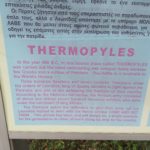 HistoryOctober 31, 2023Exploring Why is the Battle of Thermopylae Interesting
HistoryOctober 31, 2023Exploring Why is the Battle of Thermopylae Interesting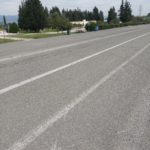 GuidesOctober 31, 2023Your Guide to the Athens to Thermopylae Train Journey
GuidesOctober 31, 2023Your Guide to the Athens to Thermopylae Train Journey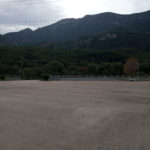 GuidesOctober 31, 2023Uncover the Mystery: Where is Thermopylae Today?
GuidesOctober 31, 2023Uncover the Mystery: Where is Thermopylae Today? GuidesOctober 31, 2023Uncover History by Visiting Thermopylae – A Travel Guide
GuidesOctober 31, 2023Uncover History by Visiting Thermopylae – A Travel Guide



